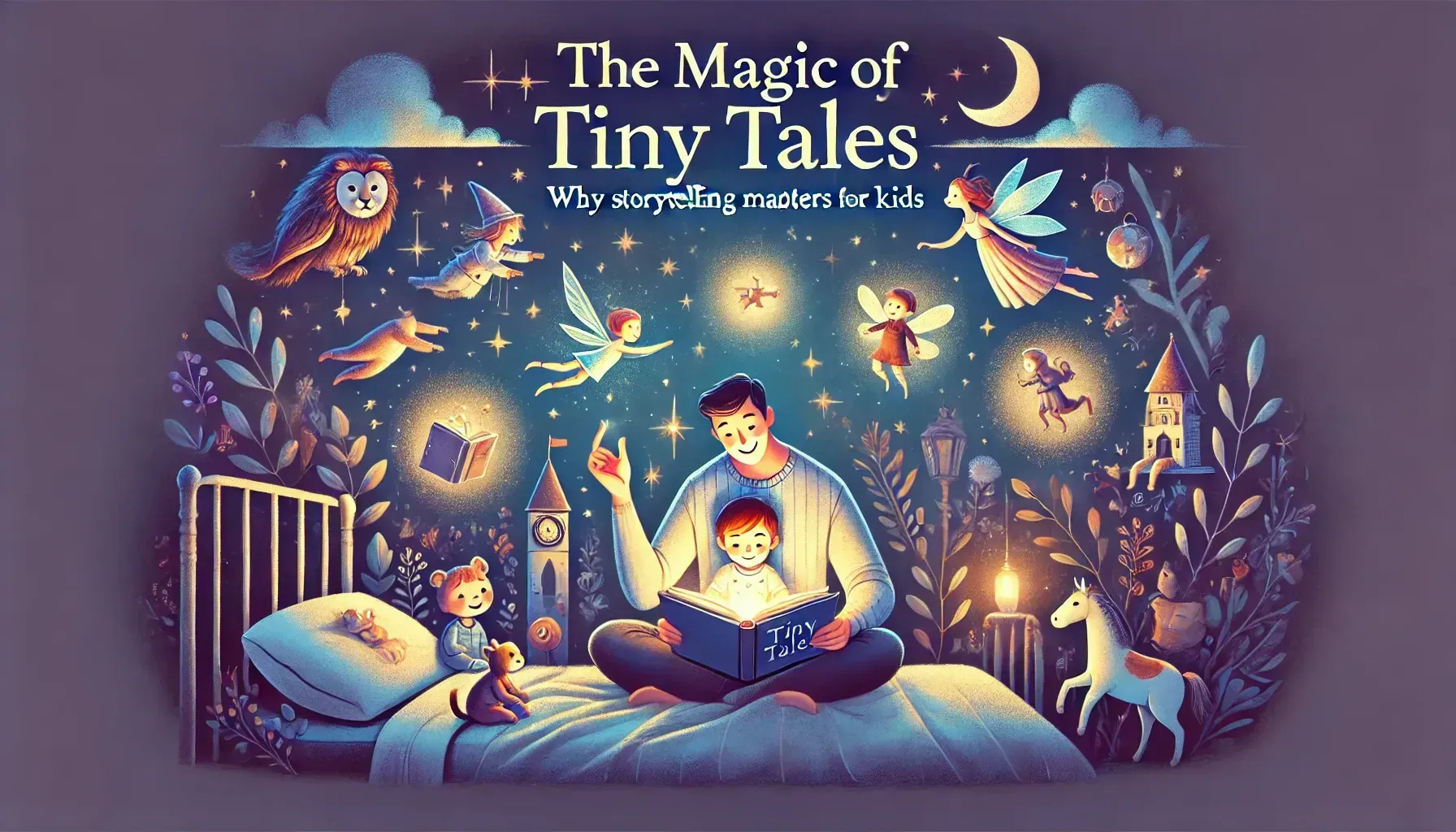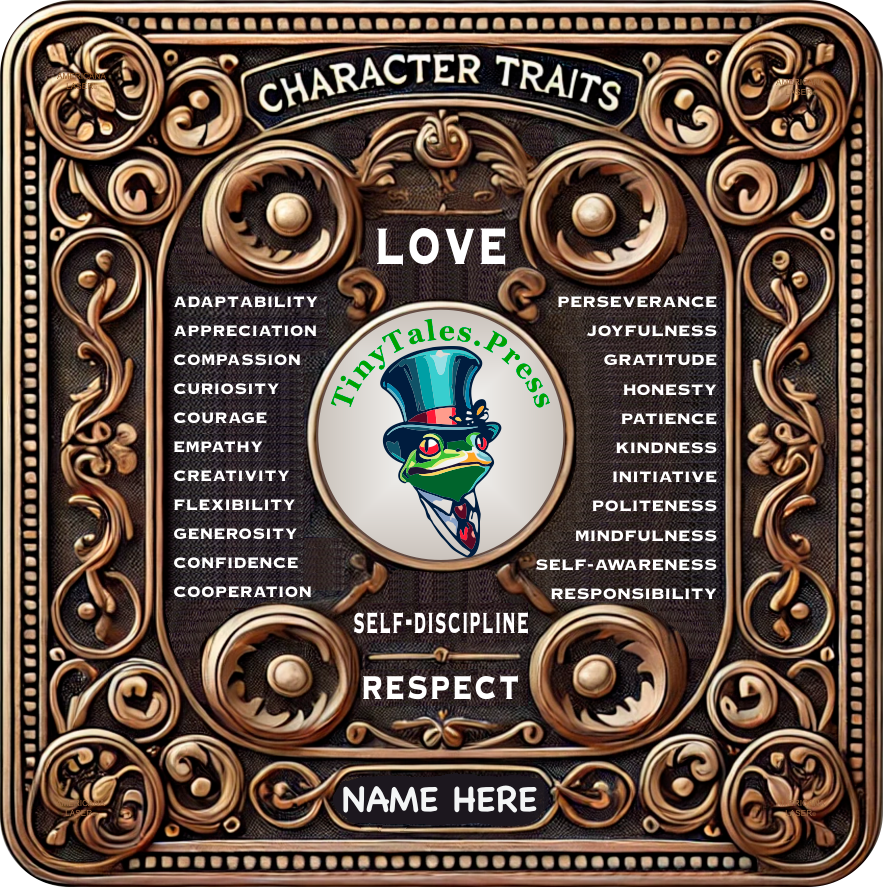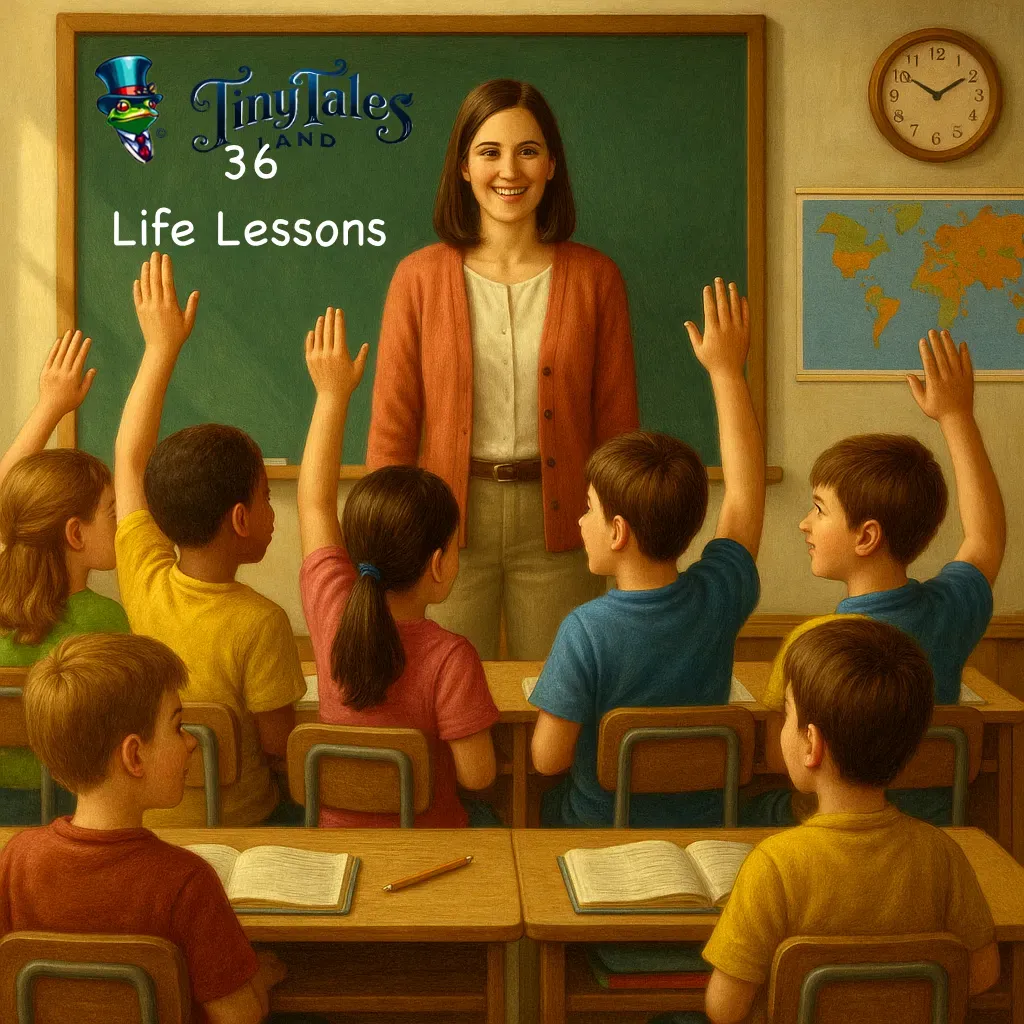25 Essential Character Traits and Why They Matter
Nurturing Young Minds through Night Time Stories for Kids
At Tinytales.press, we believe that bedtime stories are more than just a way to help children fall asleep—they are a powerful tool for character development. By introducing valuable life lessons through storytelling, we can help children grow into kind, responsible, and resilient individuals.
Below are 25 essential character traits and why they matter in a child’s growth and development.
25 Essential Character Traits for Kids and Why They Matter
Love: Cultivates emotional security and the ability to form meaningful relationships. Teaching children the trait of love starts with small, everyday actions. Parents can model love through kind words like saying “I love you” daily and encourage children to express affection through hugs and thoughtful gestures. Love is shown through actions such as helping a tired parent or comforting a sad friend. Encouraging generosity and teaching forgiveness reinforce that love means letting go of anger. Through bedtime stories from Tiny Tales, real-life experiences, and positive reinforcement, children can grow into compassionate, loving individuals.
Empathy: Enhances understanding and sharing of others’ feelings. Bedtime stories that showcase different perspectives help nurture empathy. For example, reading a Tiny Tale about a lost puppy allows children to experience emotions like fear and hope. Asking questions like, “How would you help the puppy?” encourages kids to put themselves in someone else’s shoes. Regular exposure to stories highlighting emotions and acts of kindness helps children recognize and respond to feelings in real life.
Curiosity: Encourages exploration and a love for learning. Tiny Tales that introduce mysteries or open-ended scenarios spark curiosity. A story about a young explorer discovering a hidden world can inspire children to ask questions and think creatively. These stories nurture problem-solving and instill a lifelong habit of seeking knowledge.
Respect: Promotes valuing others and their perspectives. Stories like a young fox who learns to listen before speaking illustrate the importance of respect. Bedtime stories that highlight polite behavior help children absorb these values naturally, reinforcing respectful behavior through engaging narratives.
Courage: Empowers children to face challenges and stand up for their beliefs. Tiny Tales that showcase bravery in action—like a young hero standing up for a friend—can inspire children to act courageously. Discussing the story afterward reinforces the lesson that courage is about acting despite fear.
Gratitude: Instills appreciation for what one has. Stories about characters who learn to be thankful for the little things help children develop gratitude. Parents can reinforce this by encouraging kids to reflect on their own blessings.
Patience: Teaches self-control and the ability to wait. A Tiny Tale about a squirrel waiting for acorns to grow shows that good things take time. Such stories help children see the value in being patient.
Forgiveness: Encourages letting go of grudges. Stories about characters who resolve conflicts and forgive each other teach children the power of forgiveness. Tiny Tales make these lessons relatable and memorable.
Compassion: Fosters a caring attitude toward others. Tiny Tales featuring characters who help those in need nurture compassion. Children learn to support and care for others.
Generosity: Promotes sharing and selflessness. Stories about characters who give without expecting in return teach children that even small acts of kindness matter.
Joyfulness: Cultivates a positive outlook. Stories filled with laughter, adventure, and appreciation for life instill joy. These stories teach that happiness comes from simple moments.
Adaptability: Equips children to handle change. Tales of characters who face new situations and adapt help children understand that change is a part of life and can lead to growth.
Cooperation: Encourages teamwork. Tiny Tales about friends working together to solve a problem reinforce the importance of helping others and collaborating.
Fairness: Instills a sense of justice. Stories that emphasize equal treatment, like sharing and taking turns, teach children to value fairness.
Self-Discipline: Teaches impulse control. Stories about characters learning daily routines or resisting temptation help children see the benefits of self-control.
Initiative: Encourages taking action independently. Tales of characters who solve problems or help others on their own show that small actions can lead to big impacts.
Resilience: Builds perseverance. Characters who stumble but keep trying demonstrate that effort leads to success, even after setbacks.
Responsibility: Teaches accountability. Stories about fulfilling duties—like taking care of a pet—show children that actions have consequences.
Honesty: Promotes truthfulness. Tales of characters who learn that honesty builds trust help children value being truthful.
Creativity: Encourages imagination. Stories that explore magical lands or creative solutions spark innovation and problem-solving.
Mindfulness: Enhances focus and awareness. Bedtime stories that encourage quiet reflection help children become more aware of their emotions and surroundings.
Appreciation: Fosters gratitude for experiences and others’ efforts. Stories that highlight the value of small moments and acts of kindness help children express appreciation.
Perseverance: Teaches persistence. Tales of characters who keep trying despite difficulties help children learn that persistence leads to success.
Humility: Teaches openness to growth. Stories about characters who learn from mistakes and help others without bragging teach children that strength comes from modesty.
Integrity: Guides moral choices. Stories about doing the right thing, even when it’s hard, show children the value of strong moral principles.
Tiny Tales in Action: A Story Example
The Courageous Little Fox
Luna, a small fox with curiosity as bright as the moon, lived in the Whispering Woods. She heard rumors about a cursed place called the Old Hollow. One night, she decided to find out the truth.
As she ventured into the dark forest, she remembered her mother’s words: “Bravery isn’t about not being scared. It’s about moving forward even when you are.” Luna faced the unknown with perseverance and discovered a beautiful, hidden meadow.
Returning to the village, she told the truth—even when others doubted her. Eventually, the foxes followed her and found joy in the once-feared place.
Moral: - Courage: Luna faced her fear. - Perseverance: She didn’t give up. - Integrity: She told the truth, even when it was hard.
Why Tiny Tales Work - Relatable characters - Meaningful conflict and resolution - Engaging plots with action and surprise - Emotional themes like fear, curiosity, and kindness - Clear morals woven into the narrative
Start Your Character Journey
Visit Tinytales.press to explore our full collection.
References & Further Reading - Empathy, Social Orientation, and Honesty – Frontiers in Psychology - Why Character Education Matters – Teacher Created Materials - Reading Picture Books Promotes Prosocial Behavior – Frontiers - Parental Socialization of Prosocial Behavior – ScienceDirect









